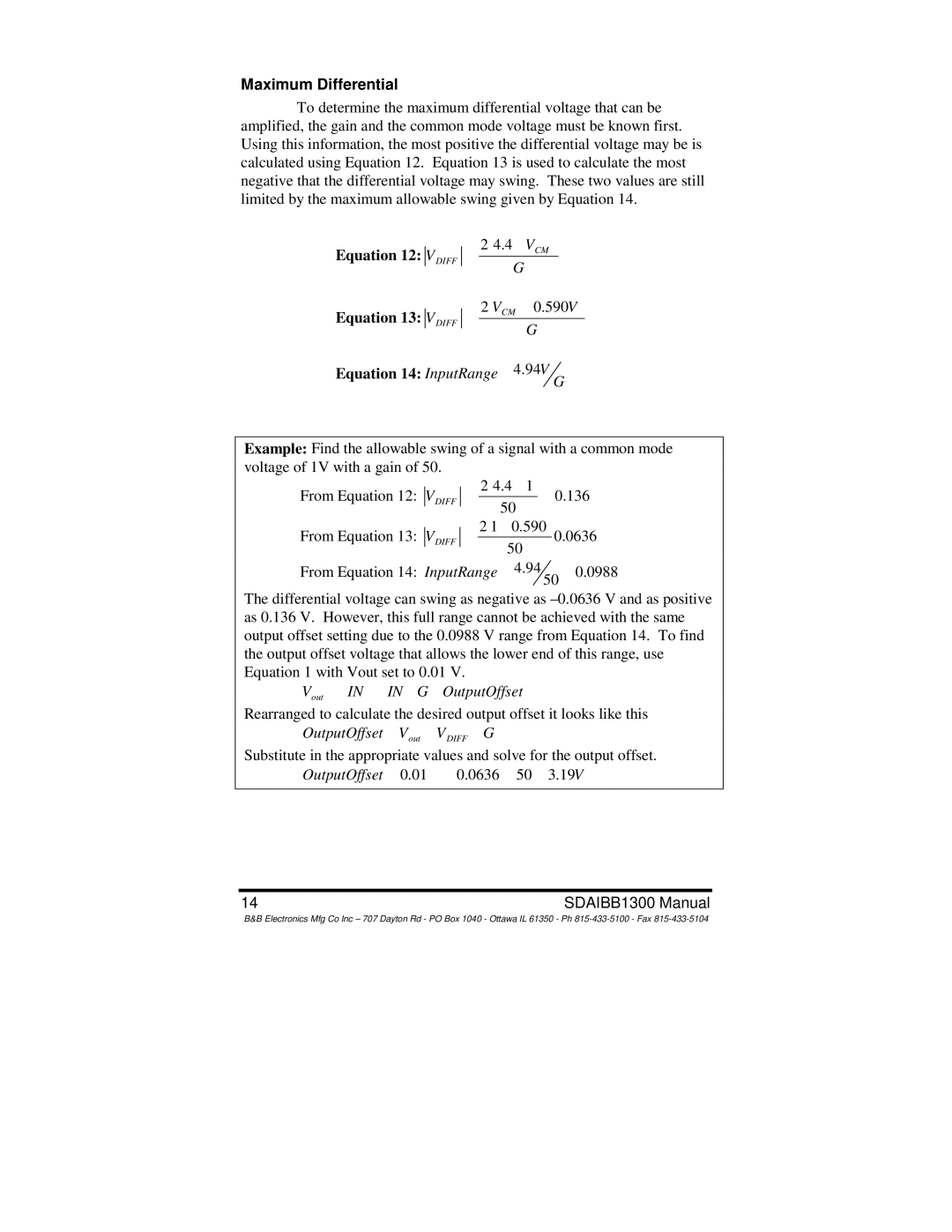SDAIBB specifications
B&B Electronics SDAIBB is a standout product in the world of industrial data communication, specifically designed for industrial automation applications. As industries increasingly rely on robust, reliable communication systems, the SDAIBB serves as a vital component in ensuring seamless connections between various devices and networks.One of the main features of the SDAIBB is its dual mode operation, enabling it to function as both a standard RS-232/RS-422/RS-485 serial device server and a gateway, thereby providing flexibility in communication. This dual capability supports various protocols, facilitating interoperability among a wide range of devices in diverse industrial environments.
The SDAIBB is equipped with multiple serial ports, which allows for simultaneous connections to different devices. This feature is crucial in environments where multiple machines or sensors need to communicate data back to a centralized control system. Additionally, the device supports a variety of baud rates, which enhances compatibility with different serial devices.
One notable technology incorporated into the SDAIBB is its advanced error detection and correction capabilities. This feature ensures data integrity during transmission, which is paramount in industrial settings where data loss or corruption can lead to significant operational disruptions. The device’s built-in surge protection and isolation circuits further enhance its reliability in harsh environments.
The SDAIBB also supports various networking protocols, including Modbus and TCP/IP, which simplifies integration into existing systems. The device is compatible with both Ethernet and Wi-Fi, providing versatile connectivity options for diverse industrial layouts. This connectivity aids in remote monitoring and control, offering companies improved efficiency and reduced downtime.
In terms of installation and configuration, the SDAIBB is user-friendly. It comes with a web-based management interface that allows users to configure settings and monitor performance easily. This accessibility ensures that technicians can quickly set up the device without extensive training, thus reducing deployment time.
Furthermore, the SDAIBB is robustly built to withstand harsh industrial conditions. Its compact and rugged design allows it to be installed in a variety of environments, from manufacturing floors to remote field locations.
In summary, the B&B Electronics SDAIBB is a versatile and reliable solution for industrial communication needs. Its dual mode functionality, multiple serial port support, advanced error detection, and compatibility with various protocols make it an essential tool for enhancing connectivity and data integrity in industrial applications. This device is a testament to the growing importance of effective communication technology in optimizing operational efficiency and productivity in the industry.

